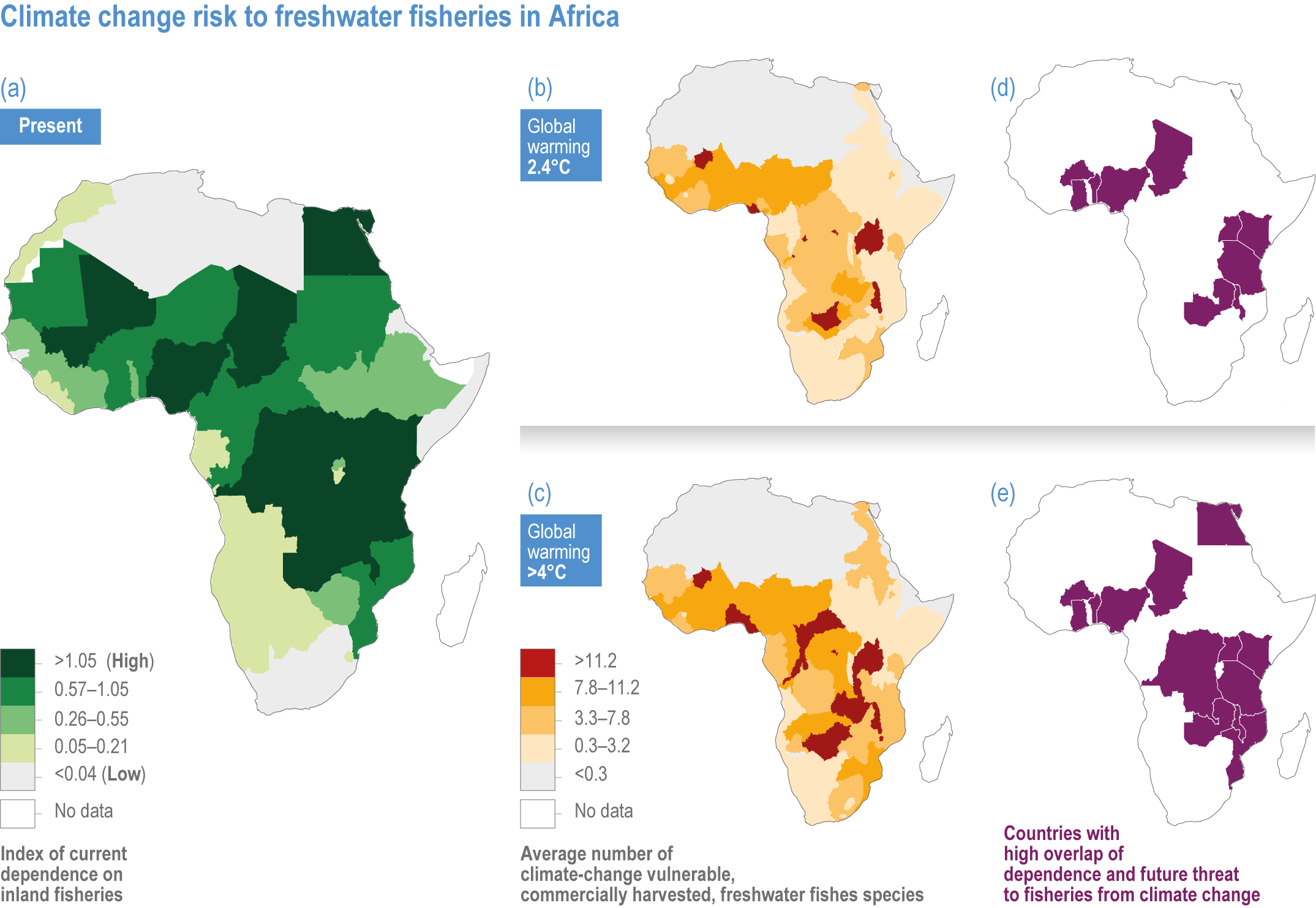Figure 9.26
Figure caption
(a) Countries’ dependence on inland fisheries for nutrition; darker green shows higher dependence on inland fisheries.
(b–c) Projected numbers of freshwater fishery species vulnerable to climate change within freshwater ecoregions under >2°C global warming and >4°C global warming estimated by the end of the 21st century (2071 to 2100). Numbers of vulnerable fish species translate to an average of 55–68% vulnerable at >2°C and 77–97% vulnerable at >4°C global warming. Darker reds indicate higher concentrations of vulnerable fish species.
(d–e) Countries (in purple) that have an overlap between high dependence on freshwater fish and high concentrations of fishery species that are vulnerable to climate change under two warming scenarios. Countries’ dependence on inland fisheries for nutrition was estimated by catch (total, tonnes) (FAO, 2018b; Fluet-Chouinard et al., 2018), per capita catch (kg per person per year) (FAO, 2018b), percentage reliance on fish for micronutrients, and percentage consumption per household (Golden et al., 2016). Z-scores of each metric were averaged for each country to create a composite index describing ‘current dependence on freshwater fish’ for each country with darker blue colours indicating higher dependence. Data on vulnerable fish species was from (Nyboer et al., 2019).
